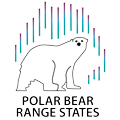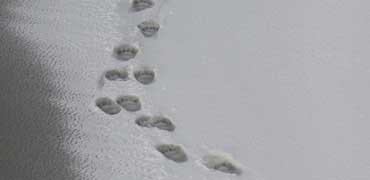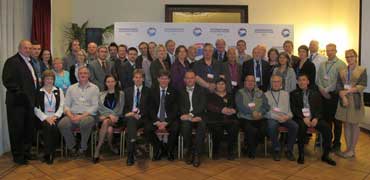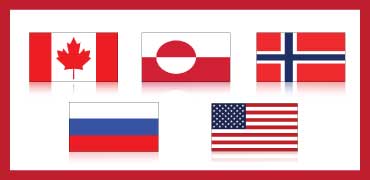Bilateral Environmental Agreement between the Government of Russia and the Government of Norway, including Provisions on Polar Bear Conservation
Subpopulation: Barents Sea.
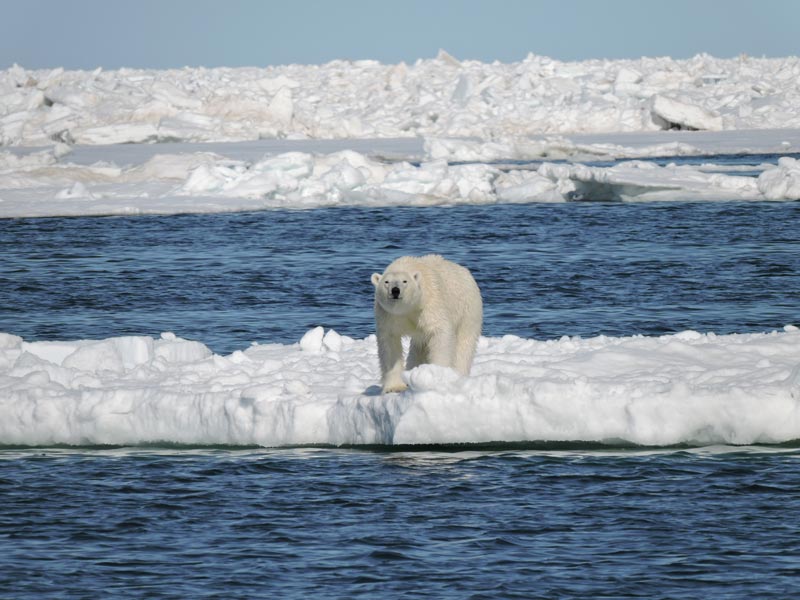 Photo credit: USFWSThe bilateral environmental agreement between the Government of the Russian Federation and the Government of Norway entered into force on December 24, 1992. As part of this agreement, a Memorandum of Understanding (MOU) between the Governments of Norway and Russia on cooperation on Polar Bears in the Barents Sea region was signed in 2015. Through this MOU Russia and Norway have agreed to a bilateral cooperation with regard to research, monitoring and management of the Barents Sea subpopulation.
Photo credit: USFWSThe bilateral environmental agreement between the Government of the Russian Federation and the Government of Norway entered into force on December 24, 1992. As part of this agreement, a Memorandum of Understanding (MOU) between the Governments of Norway and Russia on cooperation on Polar Bears in the Barents Sea region was signed in 2015. Through this MOU Russia and Norway have agreed to a bilateral cooperation with regard to research, monitoring and management of the Barents Sea subpopulation.
Source: Circumpolar Action Plan, Annex II
Commission of the Agreement between the Government of the United States of America and the Government of the Russian Federation on the Conservation and Management of the Alaska-Chukotka Polar Bear Population
Subpopulation: Chukchi Sea (Alaska-Chukotka)
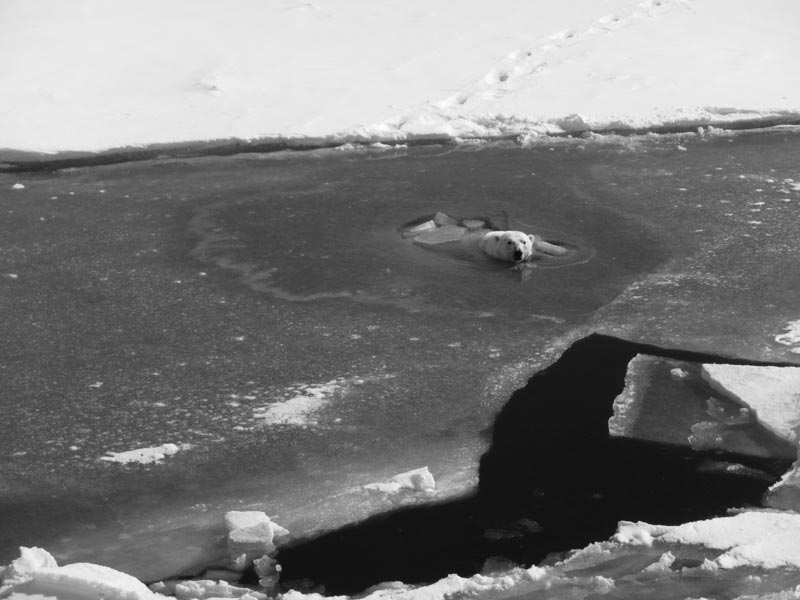 The U.S.-Russia Agreement establishes the U.S.-Russia Polar Bear Commission, which makes management decisions, establishes taking limits, and carries out other responsibilities under the Agreement.
The U.S.-Russia Agreement establishes the U.S.-Russia Polar Bear Commission, which makes management decisions, establishes taking limits, and carries out other responsibilities under the Agreement.
Responsibilities of the Commission Include:
- Facilitating cooperation for the implementation of the Agreement between the Parties and indigenous peoples.
- Adopting measures to restrict the take of polar bears for subsistence purposes within the framework of the established annual taking limits, including seasons and restrictions on sex and age.
- Identifying the habitats of polar bears and developing recommendations for their conservation.
- Consideration of research programs, including joint programs, on the study, preservation and monitoring of polar bears.
- Examining information and scientific data on polar bears, including information on harvested polar bears, including in cases of a threat to human life.
- Preparing and distributing materials on the conservation of the Alaska-Chukotka polar bear population
- Performing other functions necessary and appropriate for implementation of the Agreement.
The Commission is composed of four members with each country having one Native and one federal representative.
The Commission has met annually since 2009. At a meeting in June 2010, the Commission placed an upper harvest limit of 58 polar bears (19 female and 39 male) from the Alaska-Chukotka population, and split evenly between Native peoples of Alaska and Chukotka. This harvest limit was re-established by the Commission annually until 2017. In 2018, following the recommendation of the Scientific Working Group (SWG) that the Commission establish a sustainable harvest level based on new biological information, the Commission adopted an annual quota of 85 polar bears, no more than one-third of which are female.
Commission meeting reports and Rules of Procedure:
- Rules of procedure
- Report from the 10th Commission Meeting, 2018
- Report from the 9th Commission Meeting, 2017
- Report from the 8th Commission Meeting, 2016
- Report from the 7th Commission Meeting, 2015
- Report from the 6th Commission Meeting, 2014
- Report from the 5th Commission Meeting, 2013
- Report from the 4th Commission Meeting, 2012
- Report from the 3rd Commission Meeting, 2011
- Report from the 2nd Commission Meeting, 2010
- Report from the inaugural Commission Meeting, 2009
- Harvest Workshop: Executive summary, 2010
Scientific Working Group (SWG)
Memorandum of Understanding between Environment Canada and the United States Department of the Interior for the Conservation and Management of Shared Polar Bear Populations
Subpopulation: Southern Beaufort Sea.
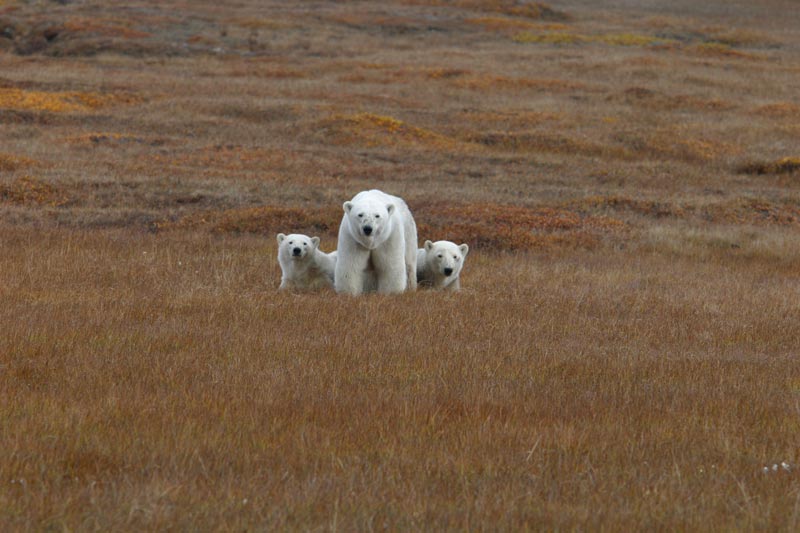 Photo credit: USFWSIn May 2008, Canada (Environment Canada) and the United States (Department of the Interior) entered into a memorandum of understanding (MOU) for the conservation and management of shared polar bear populations. The purpose of the MOU is to facilitate and enhance coordination, cooperation and development of partnerships between the signatories regarding the conservation and management of polar bears. Under the MOU, a Bilateral Oversight Group was established in order to provide an organizational contact and to develop sub-committees or working groups, as required. The Oversight Group is made up of high-level federal government officials, representatives from Canadian and Alaskan Indigenous organizations and state/provincial representatives. The MOU also calls for a framework for the development and implementation of short-, medium- and long-term actions that focus on specific components of polar bear conservation. Participants will develop, implement, review and coordinate specific cooperative conservation projects and programs. Importantly, the two countries recognize the value and efficacy of the Inuvialuit–Inupiat Polar Bear Management Agreement for the Southern Beaufort Sea.
Photo credit: USFWSIn May 2008, Canada (Environment Canada) and the United States (Department of the Interior) entered into a memorandum of understanding (MOU) for the conservation and management of shared polar bear populations. The purpose of the MOU is to facilitate and enhance coordination, cooperation and development of partnerships between the signatories regarding the conservation and management of polar bears. Under the MOU, a Bilateral Oversight Group was established in order to provide an organizational contact and to develop sub-committees or working groups, as required. The Oversight Group is made up of high-level federal government officials, representatives from Canadian and Alaskan Indigenous organizations and state/provincial representatives. The MOU also calls for a framework for the development and implementation of short-, medium- and long-term actions that focus on specific components of polar bear conservation. Participants will develop, implement, review and coordinate specific cooperative conservation projects and programs. Importantly, the two countries recognize the value and efficacy of the Inuvialuit–Inupiat Polar Bear Management Agreement for the Southern Beaufort Sea.
For additional information about the Canada-United States MOU, please visit Environment Canada’s website.
Source: Circumpolar Action Plan, Annex II
Inuvialuit–Inupiat Polar Bear Management Agreement in the Southern Beaufort Sea
Subpopulation: Southern Beaufort Sea.
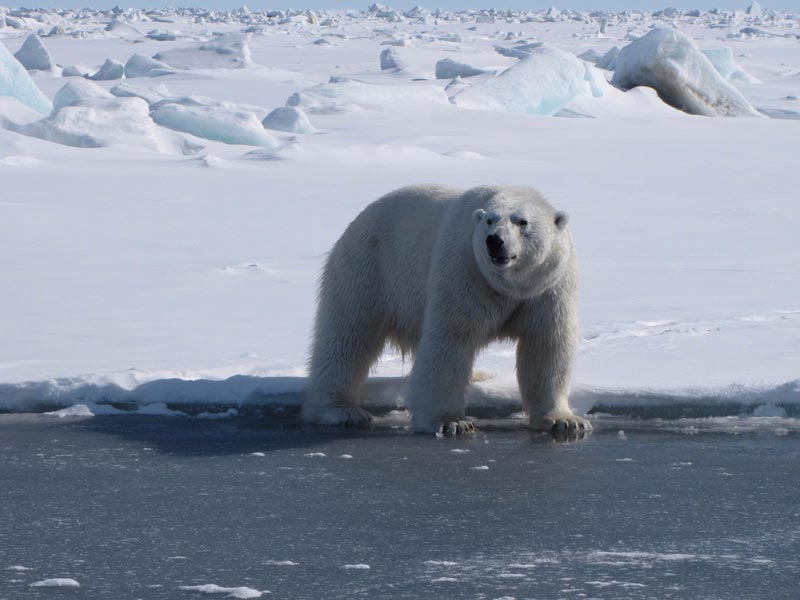 Photo credit: USFWSThe Inuvialuit people in Canada and the Inupiat people in Alaska (U.S.) both harvest polar bears from the Southern Beaufort Sea subpopulation. Due to concerns related to the combined harvest level, in 1968, Canada established harvest quotas. After the passage of the Marine Mammal Protection Act in the U.S. in 1972, only coastal-dwelling Alaskan Natives were allowed to harvest polar bears for subsistence purposes and for making and selling handicrafts. No quota was established, although authorized take was required to be non-wasteful. At the time, there was no mechanism to cooperatively manage the harvest between the two countries. The 1973 International Agreement on the Conservation of Polar Bears committed countries that share polar bear populations to conduct and coordinate research, exchange information and consult on management. Joint concern about the population led the Inuvialuit Game Council (on behalf of the Inuvialuit in Canada) and the North Slope Borough Fish and Game Management Committee (on behalf of the Inupiat of the North Slope in Alaska) to negotiate an agreement to help ensure the health and stability of this subpopulation and maintain a sustained harvest for traditional users. Originally signed in 1988, the Inuvialuit–Inupiat Polar Bear Management Agreement is updated regularly.
Photo credit: USFWSThe Inuvialuit people in Canada and the Inupiat people in Alaska (U.S.) both harvest polar bears from the Southern Beaufort Sea subpopulation. Due to concerns related to the combined harvest level, in 1968, Canada established harvest quotas. After the passage of the Marine Mammal Protection Act in the U.S. in 1972, only coastal-dwelling Alaskan Natives were allowed to harvest polar bears for subsistence purposes and for making and selling handicrafts. No quota was established, although authorized take was required to be non-wasteful. At the time, there was no mechanism to cooperatively manage the harvest between the two countries. The 1973 International Agreement on the Conservation of Polar Bears committed countries that share polar bear populations to conduct and coordinate research, exchange information and consult on management. Joint concern about the population led the Inuvialuit Game Council (on behalf of the Inuvialuit in Canada) and the North Slope Borough Fish and Game Management Committee (on behalf of the Inupiat of the North Slope in Alaska) to negotiate an agreement to help ensure the health and stability of this subpopulation and maintain a sustained harvest for traditional users. Originally signed in 1988, the Inuvialuit–Inupiat Polar Bear Management Agreement is updated regularly.
For additional information about the Inuvialuit-Inupiat Agreement, including current voluntary harvest quotas, please visit the North Slope Borough’s polar bear website or Inuvialuit’s Joint Secretariat website.
Source: Circumpolar Action Plan, Annex II
![]()
![]()
![]()
![]()
![]()
